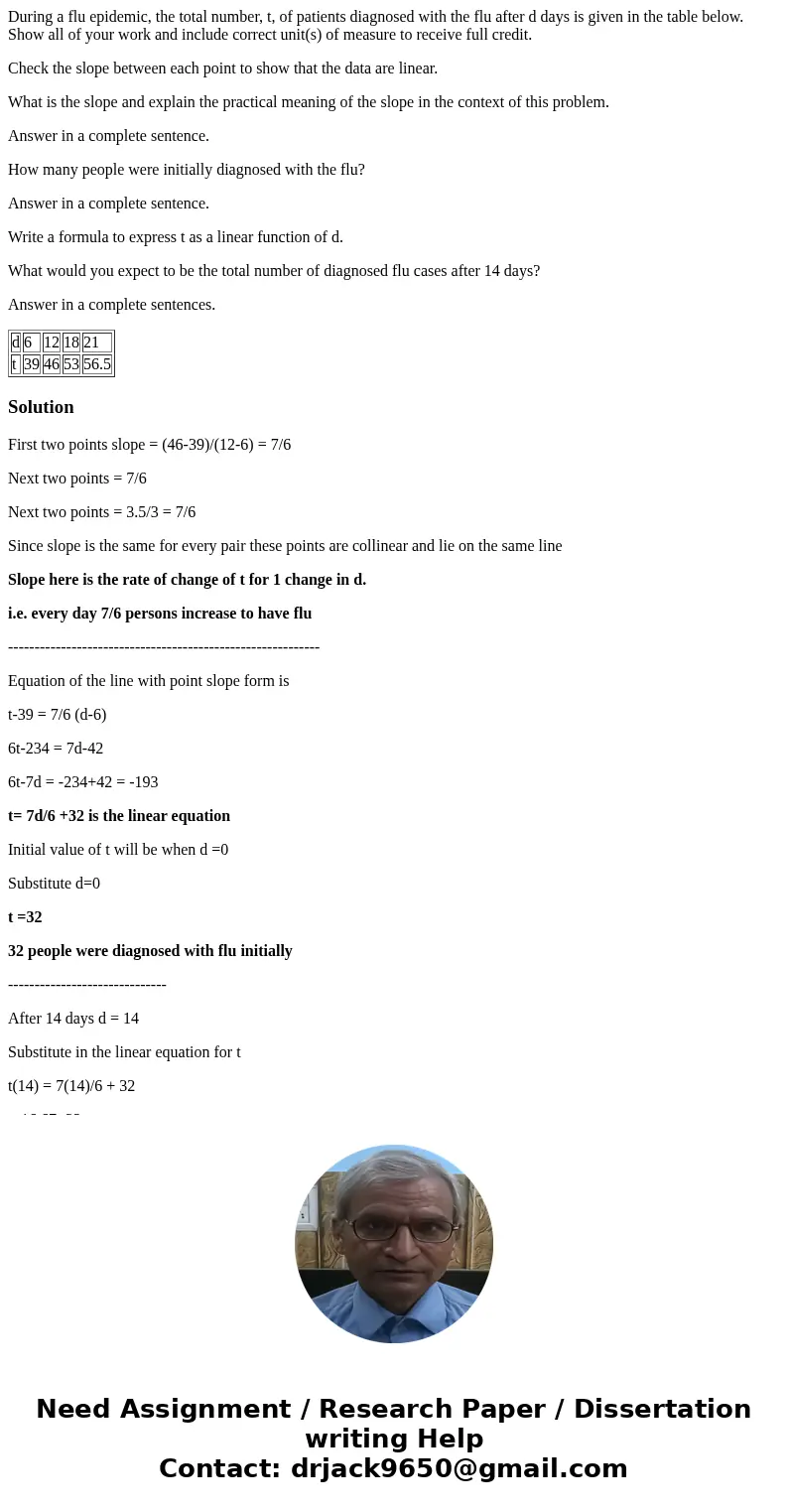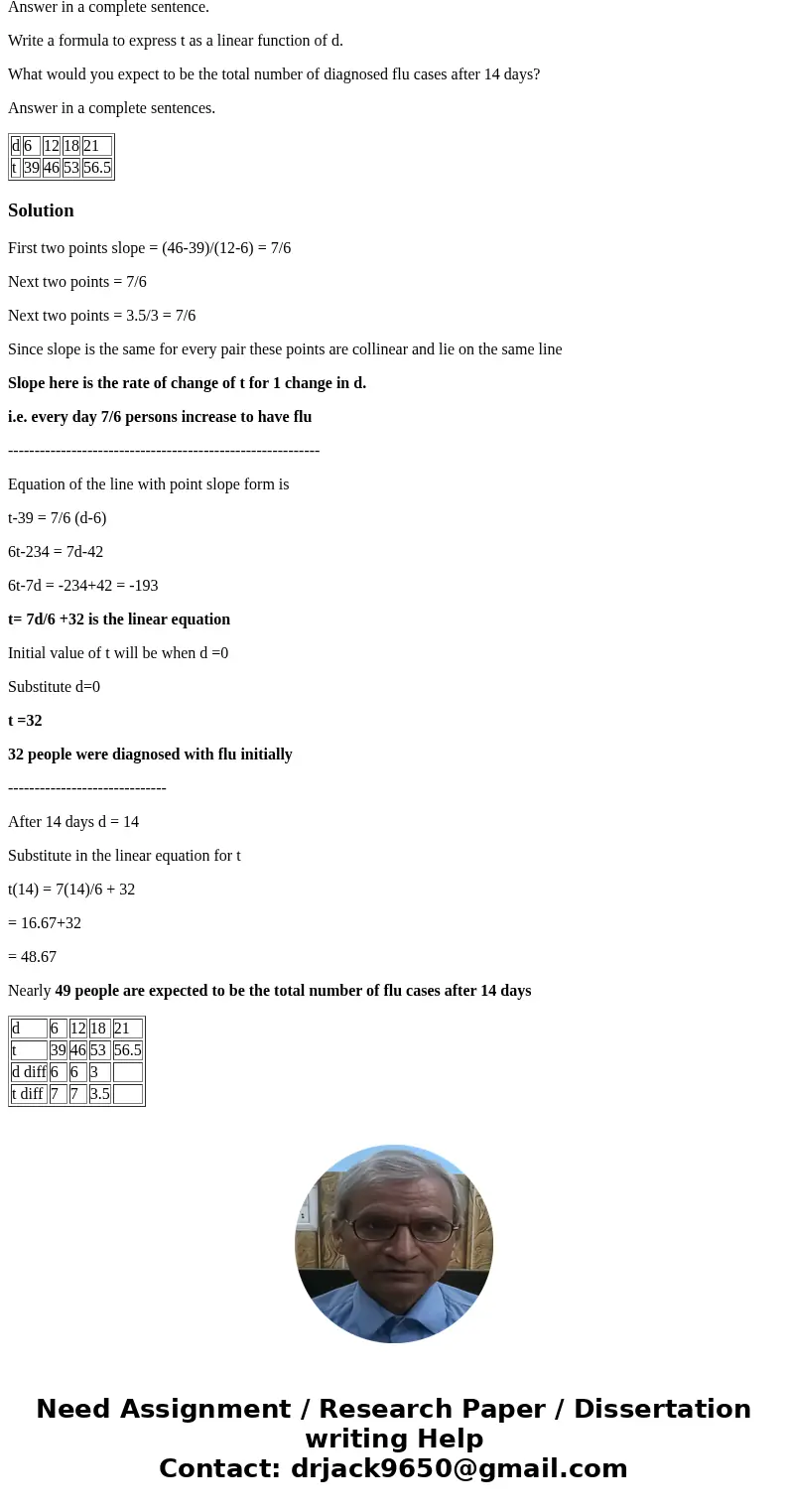During a flu epidemic the total number t of patients diagnos
During a flu epidemic, the total number, t, of patients diagnosed with the flu after d days is given in the table below. Show all of your work and include correct unit(s) of measure to receive full credit.
Check the slope between each point to show that the data are linear.
What is the slope and explain the practical meaning of the slope in the context of this problem.
Answer in a complete sentence.
How many people were initially diagnosed with the flu?
Answer in a complete sentence.
Write a formula to express t as a linear function of d.
What would you expect to be the total number of diagnosed flu cases after 14 days?
Answer in a complete sentences.
| d | 6 | 12 | 18 | 21 |
| t | 39 | 46 | 53 | 56.5 |
Solution
First two points slope = (46-39)/(12-6) = 7/6
Next two points = 7/6
Next two points = 3.5/3 = 7/6
Since slope is the same for every pair these points are collinear and lie on the same line
Slope here is the rate of change of t for 1 change in d.
i.e. every day 7/6 persons increase to have flu
-----------------------------------------------------------
Equation of the line with point slope form is
t-39 = 7/6 (d-6)
6t-234 = 7d-42
6t-7d = -234+42 = -193
t= 7d/6 +32 is the linear equation
Initial value of t will be when d =0
Substitute d=0
t =32
32 people were diagnosed with flu initially
------------------------------
After 14 days d = 14
Substitute in the linear equation for t
t(14) = 7(14)/6 + 32
= 16.67+32
= 48.67
Nearly 49 people are expected to be the total number of flu cases after 14 days
| d | 6 | 12 | 18 | 21 |
| t | 39 | 46 | 53 | 56.5 |
| d diff | 6 | 6 | 3 | |
| t diff | 7 | 7 | 3.5 |


 Homework Sourse
Homework Sourse